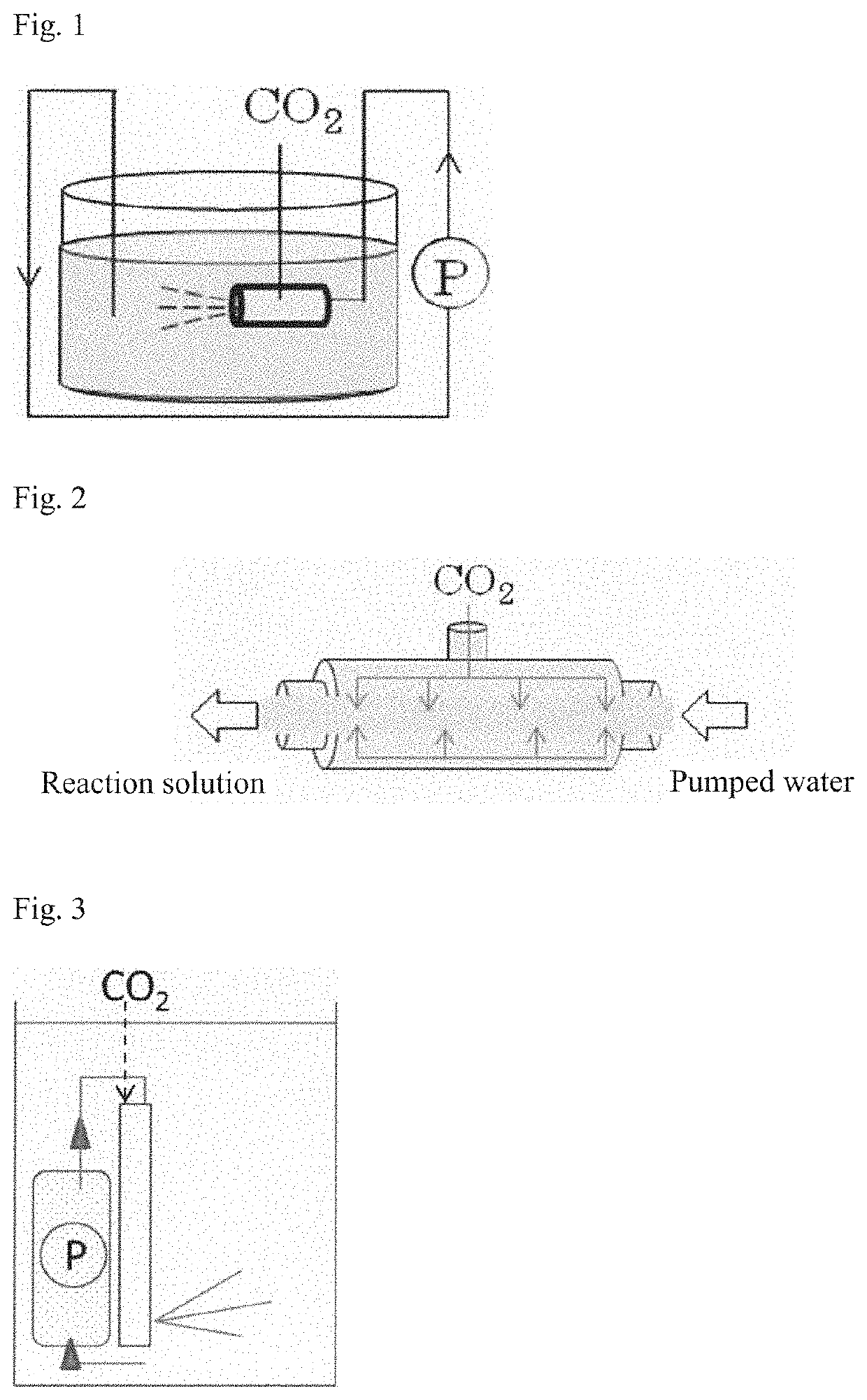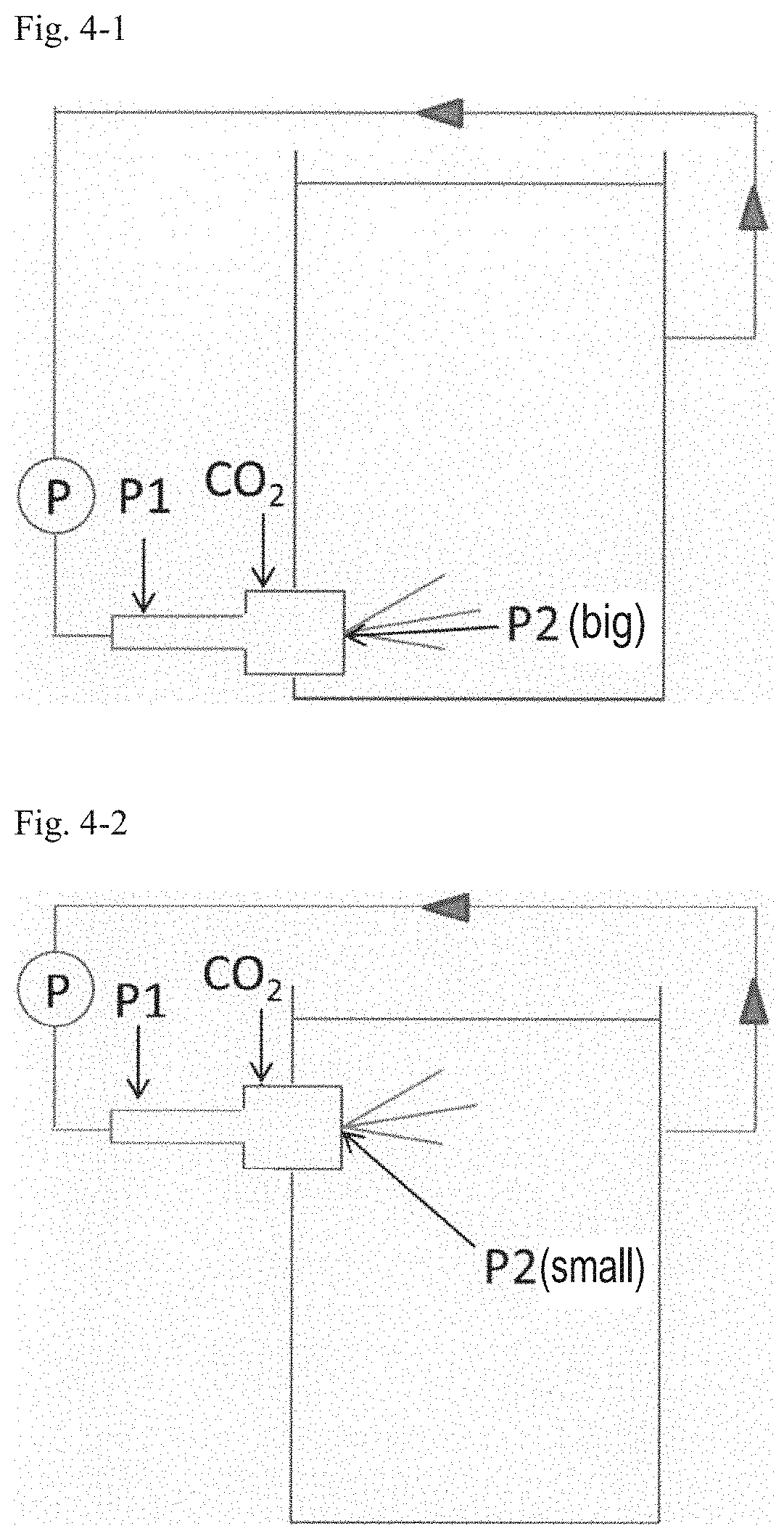Processes for preparing inorganic carbonates
a technology of inorganic carbonates and processes, applied in the field of inorganic carbonates preparation, can solve the problems of limited application of lime-soda process and solvay process, and achieve the effects of short time, good efficiency and low power consumption
- Summary
- Abstract
- Description
- Claims
- Application Information
AI Technical Summary
Benefits of technology
Problems solved by technology
Method used
Image
Examples
examples
[0124]The following specific experimental examples further illustrate the present invention, but the present invention is not limited to these experimental examples. Unless otherwise specified, the concentrations, parts and the like as used herein are based on weight, and the numerical ranges are described to include their endpoints.
experiment 1
Calcium Carbonate Microparticles
(Sample 1-1 to Sample 1-7)
[0125]Sample 1-1 to Sample 1-4 were prepared using a reaction system as shown in FIG. 1 charged with 30 L of a 1 to 2% aqueous suspension of slaked lime (calcium hydroxide: Ca (OH)2) by circulating the reaction solution at a pumping flow rate of 80 L / min through an ultrafine bubble generator (a shear type, YJ-9 from ENVIRO VISION CO., LTD., FIG. 2) (at a jet flow rate from the nozzle of 125 L / min·cm2). A lot of ultrafine bubbles containing carbonic acid gas were generated in the reaction solution by injecting carbonic acid gas through the intake port of the ultrafine bubble generator to synthesize calcium carbonate particles by the carbonation process. The reaction was performed at a reaction temperature of 15° C. and a carbonic acid gas injection flow rate of 3 to 40 L / min, and the reaction was stopped when the pH of the reaction solution reached 7 to 8 (from the pH of about 13 before the reaction). The ultrafine bubbles had...
experiment 2
Magnesium Carbonate Microparticles
(Sample 2-1)
[0133]Magnesium carbonate microparticles were synthesized using a system similar to the one used in Experiment 1. Specifically, the system shown in FIG. 1 charged with 30 L of an about 1% aqueous suspension of magnesium hydroxide (Mg(OH)2) was used, and the reaction solution was circulated at a pumping flow rate of 80 L / min through an ultrafine bubble generator (YJ-9 from ENVIRO VISION CO., LTD.) (at a jet flow rate from the nozzle of 125 L / min·cm2). A lot of ultrafine bubbles containing carbonic acid gas were generated in the reaction solution by injecting carbonic acid gas through an intake port of the ultrafine bubble generator to synthesize magnesium carbonate particles by the carbonation process. The reaction was performed at a reaction temperature of 15° C. and a carbonic acid gas injection flow rate of 20 L / min, and the reaction was stopped when the pH of the reaction solution reached 7 to 8 (from the pH of about 10.5 before the r...
PUM
| Property | Measurement | Unit |
|---|---|---|
| particle size | aaaaa | aaaaa |
| particle size | aaaaa | aaaaa |
| particle size | aaaaa | aaaaa |
Abstract
Description
Claims
Application Information
 Login to View More
Login to View More - R&D
- Intellectual Property
- Life Sciences
- Materials
- Tech Scout
- Unparalleled Data Quality
- Higher Quality Content
- 60% Fewer Hallucinations
Browse by: Latest US Patents, China's latest patents, Technical Efficacy Thesaurus, Application Domain, Technology Topic, Popular Technical Reports.
© 2025 PatSnap. All rights reserved.Legal|Privacy policy|Modern Slavery Act Transparency Statement|Sitemap|About US| Contact US: help@patsnap.com



